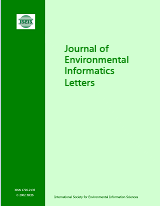doi:10.3808/jeil.202200095
Copyright © 2024 ISEIS. All rights reserved
Perspectives on the Fate of Absorbed Nitrogen in Dairy Farms
Abstract
The demand for milk rises dramatically due to the increased global population without damaging the standard of living. As a result, the scale of the dairy industry in the world is growing rapidly. Consequently, a concomitant problem that needs to be faced is the environmental impact of the by-products produced during the operation of the dairy farm. Among the substances produced in dairy farms, the most harmful pollutant to the environment is nitrogen (N). In addition, the N pollution from dairy farms is significant and N has a great danger to human health and society. This study provides a systematic review on how to alleviate N pollution from dairy cows during milk production and the removal of ammonia and nitrate from dairy wastewater via biochar adsorption. First, from a physiological perspective, the metabolic pathways of amino acids and ammonia in the rumen, portal-drained viscera, liver, and mammary gland of dairy cows are elaborated, as well as the measures to improve N utilization. In the second part, the progress of research on the removal of ammonia and nitrate by biochar adsorption and the involved mechanisms are summarized. Modified biochar has a significant improvement in nitrate removal due to weakening the repulsive effect of ions. Based on the review of this paper, it can provide relevant theoretical support for future studies on N pollution mitigation from dairy farms.
Keywords: nitrogen, amino acids, nitrate, dairy farm, adsorption
Supplementary Files:
Refbacks
- There are currently no refbacks.
